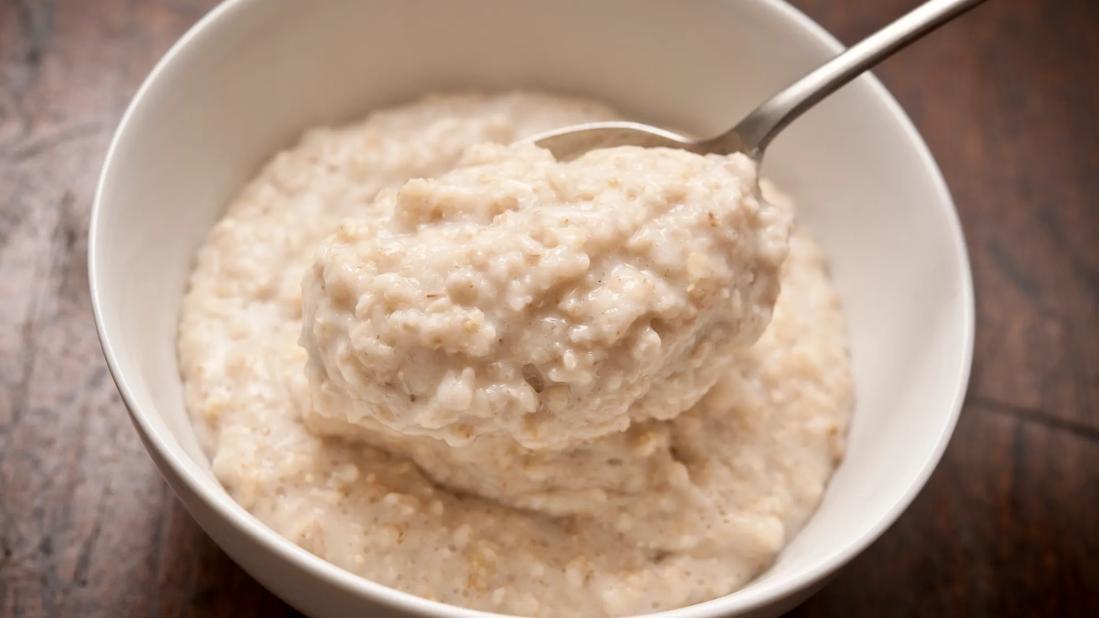Is Oatmeal as Healthy as You Think?
It’s hard to beat the benefits of oats, but be cautious of sugared-up instant oatmeal options

Oatmeal carries a reputation as a bowl of healthy goodness. But is the mighty oat really that super-duper? The answer depends on what kind of oatmeal you’re eating.
It’s hard to go wrong eating basic run-of-the-mill oats, a whole grain with a stellar nutritional resume. But when you open a packet of flavored instant oatmeal for a meal … well, let’s just say the healthiness grade can drop a bit.
We asked registered dietitian Beth Czerwony, RD, LD, for a spoonful of knowledge on the matter.
Nutritional value of oatmeal
Oatmeal certainly earns its “healthy food” bragging rights. For starters, it’s packed with protein and dietary fiber — two biggies for your body when it comes to eating a nutritious diet. (More on that in a bit.)
And just look at this robust list of vitamins and nutrients found in old-fashioned rolled or steel-cut oats. (The numbers are for a half-cup of oats, roughly the amount in a single serving of oatmeal.)
- Manganese: 64% of your recommended daily value (DV)
- Copper: 18% DV
- Vitamin B1:(thiamin): 16% DV
- Magnesium: 13% DV
- Phosphorus: 13% DV
- Zinc: 13% DV
- Iron: 10% DV
- Vitamin B5: 9% DV
“It’s really a nutrient-dense food,” says Czerwony.
Health benefits of eating oatmeal
So, what can all of those vitamins and nutrients in oatmeal do for you? Let’s break it down.
Lower cholesterol
Research shows that a daily bowl of oatmeal can reduce your risk of heart disease by lowering your total cholesterol and artery-clogging “bad” cholesterol.
Those oats can work pretty quickly, too: One study found that people saw significant drops in both their total and bad cholesterol levels after just eight weeks of adding oat flakes into their daily diet.
“It’s a big win for your health — and you get it done at breakfast before leaving the house in the morning,” notes Czerwony.
Blood sugar management
Oatmeal includes a soluble fiber known as beta-glucan, which breaks down into a gel-like solution that coats your gut. That coating slows down glucose (sugar) absorption into your bloodstream.
That’s why some studies suggest that oatmeal is an ideal food for someone with Type 2 diabetes. (But other research has been more subdued about the effects of oatmeal for glycemic control.)
Weight loss
After a meal, oatmeal tends to sit heavy in your belly — and that can help you get lighter.
“If you feel full for longer after eating, it’s easier to go from meal to meal without grazing on unhealthy snacks,” says Czerwony. “In the end, that cuts down on extra calories you might consume.”
Researchers found that eating oats can reduce:
- Body weight
- Body mass index (BMI)
- Body fat
- Waist-to-hip ratio
Regular #2s
Thanks to its fiber-rich makeup, oatmeal can have a definite regulatory effect on your pooping pattern. It packs a double punch with both insoluble and soluble fiber working to move things along.
Studies focused on older adults show that eating oat bran can eliminate the need to take laxatives to relieve constipation, which often becomes more of an issue with age.
“Oatmeal can really help with digestion and your gastrointestinal health,” emphasizes Czerwony.
A half-cup of oats contains about 4 grams of dietary fiber. To put that number in perspective, your daily fiber target for good gastrointestinal health should be between 25 grams and 35 grams.
Is some oatmeal less healthy?
Given all the good in oats, it seems like it would be a monumental task to make oatmeal anything less than healthy. But there is a way — which brings us to many of those yummy-sounding instant oatmeal options.
Flavored oatmeal packets are often laced with enough sugar to erode some of the base nutritional value brought by the oats, cautions Czerwony.
“There are always ways to make things unhealthy, and that’s what we see with a lot of instant oatmeal,” she says. “Food manufacturers will add sugar — A LOT of sugar — to make them taste better.”
Czerwony’s recommendation? Check the nutritional label and check for added sugars. “If you see them, look for another option,” she advises.
If you’re looking to sweeten the neutral taste of oatmeal, doing it yourself is the best choice, as you can control the amount used. Sweeteners, such as brown sugar or maple syrup, are good options in moderation. Fruit and spices can be flavorful additions, too.
How to add oats to your diet
If you’re sold on eating more oats, know that you have options beyond a boring bowl of mush. Here are some easy recipes to add some zing to your menu, while getting the most from your oats.
- Overnight oats:Try one of these options for overnight oats. As the name suggests, this dish is prepared before you go to bed at night and left in the fridge to chill. It’s a process that promises to make your morning a bit easier.
- Slow cooker steel-cut oats:Here’s another overnight option. The twist? This one uses a slow cooker for a hot-and-ready morning meal.
- 2-minute super-charged oatmeal:You’ll be ready to take on the day after eating this power-packed bowl of oats. Cooking time is only 120 seconds in the microwave, too!
- Tropical breakfast bowl:Give your breakfast an island vibe with a bowl of oatmeal boosted with the sweetness of mango and coconut.
- Oatmeal pancakes: Quick-cooking oats form the base of this batter recipe that can be used to make pancakes on a griddle. (More of a waffle fan? Try this recipe for oatmeal pecan waffles.)
- Fruit crisp:Old-fashioned oats add dietary heft to this tasty fruit crisp featuring apples and cranberries.
- Cookies:Oatmeal can turn cookies into a nutritional treat. Oatmeal raisin cookies are a classic, of course. If your tastes run toward the sweeter side, try this version that uses maple syrup.